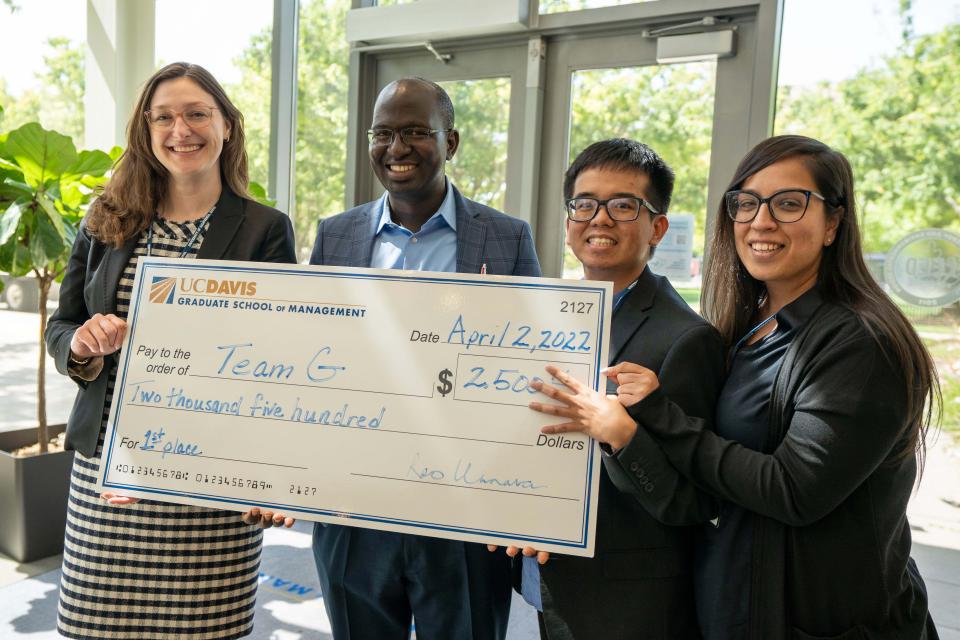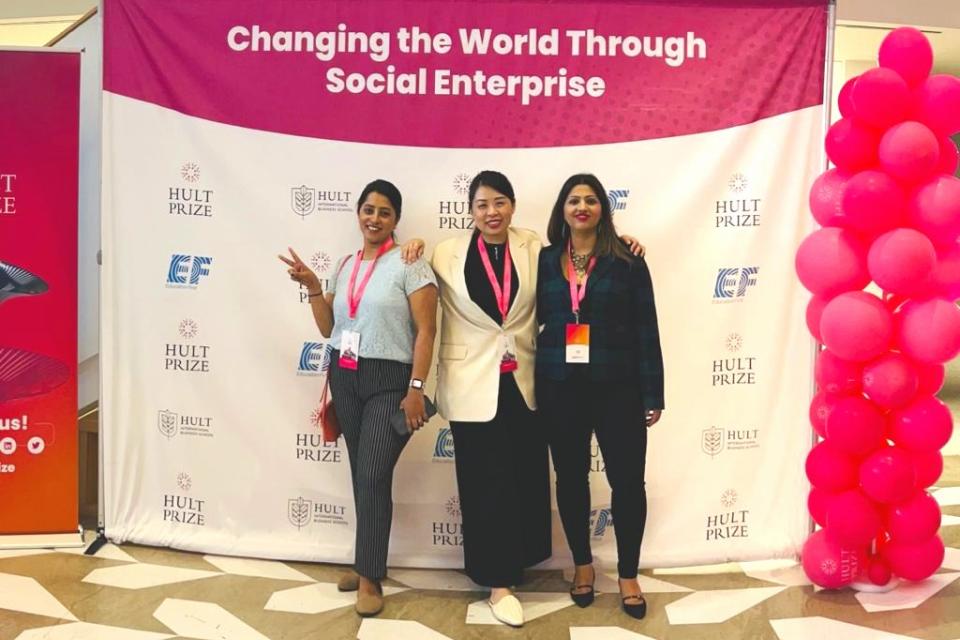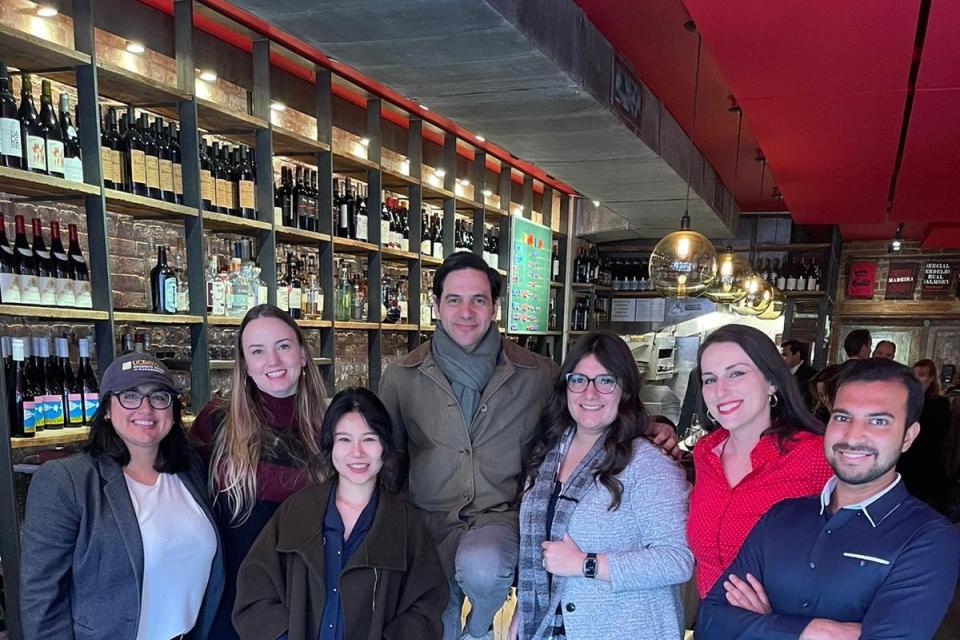Leading with Integrity: Creating an ESG Strategy
What we learned at the Net Impact Case Competition

As UC Davis MBA students, we lead by example, demonstrating honesty and integrity.
One way we are empowered to pursue our passions is through the Net Impact, UC Davis chapter, which is led by MBA students and open to graduate students who seek to spark social and environmental change.
Net Impact is a global nonprofit organization that fosters a community of leaders to promote a net positive social, environmental, and economic impact in the world. The organization hosts many events, ranging from guest speakers to local volunteering opportunities, and its members compete in net impact-focused business case competitions.
The Challenge: Formulate an ESG Strategy for Arrow Electronics
My UC Davis MBA teammates Minh Thieu Nguyen, Jack Schaufler, Andrew Robert Collins, and I recently participated in the Net Impact Case Competition hosted by the Center for Ethics and Social Responsibility at the University of Colorado Boulder’s Leeds School of Business. The competition was sponsored by Arrow Electronics, a Fortune 500 global provider of electronic components and enterprise computing products.
This was my first time competing in a case competition, and it certainly won't be my last. It was a humbling experience that invoked a sense of camaraderie mixed with a dose of healthy competition among the competing teams.
All the teams were tasked to formulate a strategy for Arrow Electronics’ biodiversity initiatives in conjunction with its environmental, social, and governance (ESG) goals.
There were three rounds: The first preliminary round required teams to submit a recording of our presentation, and the second and third rounds brought the top 20 teams to present to panels of judges on-site at the University of Colorado Boulder.
Reaching the Second Round: Lessons Learned
Our team made it to the second round, although we’re certain we could have advanced to the third round as one of the top five teams.
We learned a few lessons throughout the competition. The most important one is to know your target audience and have your presentation tailored to them.
Typically, the target audience for these case competitions is the board of directors, so it's best to get straight to the point with supporting evidence to justify your recommendations.
Another takeaway is to over-communicate with your team. During our planning and preparation, each of us focused on different topics of research. When putting the final presentation together, our communication cleared up any misunderstandings about the prompt and our recommendations, resulting in a cohesive solution that we were proud of.
Lastly, time management is important. You will invest a lot of your time into the competition, which will be taken from the time that could have otherwise been spent attending events, networking, and job searching. Alongside classes, it’s important to manage your time effectively to avoid any unnecessary stress.
Keeping these tips in mind, I hope you consider participating in a Net Impact Case Competition or similar. You'll learn a lot and have tons of fun.


